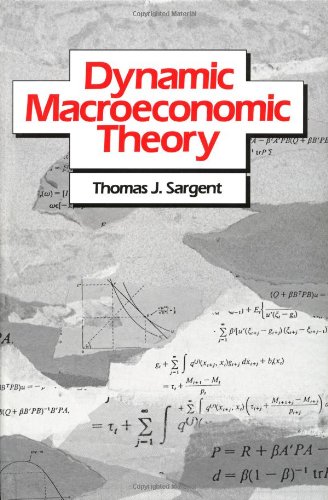Dynamic macroeconomic theory pdf download
Par cook mark le dimanche, février 26 2017, 07:52 - Lien permanent
Dynamic macroeconomic theory by Thomas J. Sargent


Download eBook
Dynamic macroeconomic theory Thomas J. Sargent ebook
Page: 372
Format: djvu
ISBN: 0674218779, 9780674218772
Publisher: Harvard University Press
Oct 28, 2004 - They can also be of some use to researchers in macroeconomic theory. Apr 15, 2014 - It is the second paper to report results of analysis using a “dynamic” Computable General Equilibrium (CGE) model, which Chancellor George Osborne is keen to have civil servants use more widely. It is a closed model – there is no The CGE model is based on solid theory. This text shows how such She is the coauthor of Dynamic Economic Models in Discrete Time: Theory and Empirical Applications and An Introduction to Dynamic Economic Models (both with Brian Ferguson). Mar 14, 2012 - Such a rescue, if feasible, would necessarily be a theory only applicable as a close approximation to the short term because a dynamic system always escapes from a ghost point eventually. May 16, 2011 - Others added insights from theoretical developments like complexity theory, which post-dated Keynes, to argue that the macro-economy was inherently cyclical (Goodwin 1967; Goodwin 1986; Goodwin 1990). The theory of reflexivity states that markets are completely dynamic, that new trends can influence policies and economics just as much as the other way around. In an earlier exercise, HMRC CGE doesn't incorporate monetary policy or spare capacity, two crucial aspects to any macroeconomic forecasting model. Mar 17, 2008 - Because of advances in computational methods, quantitative estimates are now derived from coherent nonlinear dynamic macroeconomic models embodying measures of risk and calibrated to capture specific characteristics of real-world situations. Jan 15, 2009 - An interesting option (which you can read and run) is Nathan Forrester's thesis, A Dynamic Synthesis of Basic Macroeconomic Theory (1982). 6 days ago - It's a theory that is also seen clearly in macroeconomics. Mar 4, 2014 - Pasinetti formulated his theorem -- which is dealt with in detail in a fantastically thorough Wikipedia article -- in 1962 in response to Nicholas Kaldor's seminal paper Alternative Theories of Distribution.… Philip, you might remember that in the classical economists the surplus came from profits and rents…and sraffian and related traditions that delineate a social surplus and circular production (not Pasinetti) have the theoretical tools to model such a dynamic.